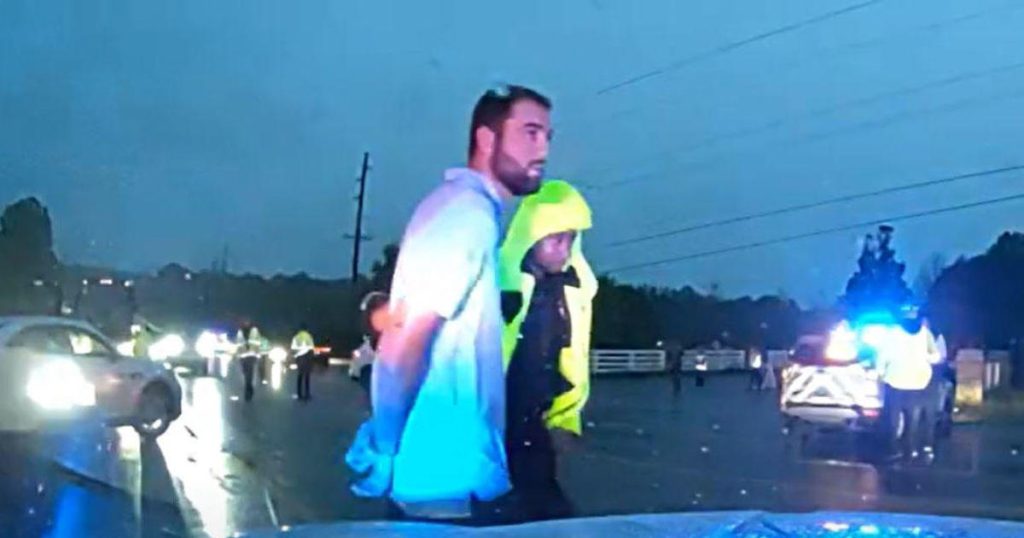The Louisville Metro Police Department detective who arrested golf star Scottie Scheffler last week failed to turn on his body-worn camera during the incident, violating department policies. Detective Bryan Gillis did not activate his camera during the encounter, which took place near Valhalla Golf Club in Louisville, Kentucky. Despite this, dashcam footage released by police shows Scheffler in handcuffs being escorted by two officers at the scene. Another video from a fixed-pole camera offers a bird’s-eye view of the area.
Gillis was among the officers on the scene after a pedestrian was struck by a shuttle bus near the golf club, where the PGA Championship was being held. Scheffler allegedly attempted to drive around traffic caused by the investigation and ignored instructions from Gillis, who was in uniform. As a result, Gillis was dragged to the ground and suffered injuries to his left wrist. Scheffler was subsequently booked for multiple charges, including second-degree assault of a police officer and reckless driving.
In response to the incident, Scheffler claimed he was in a chaotic situation and misunderstood the instructions given to him. His attorney asserted that the golfer never assaulted any officer with his vehicle and vowed to litigate the matter further if necessary. Meanwhile, Gillis faced corrective action for failing to turn on his body camera during the law enforcement action. His supervisors noted that he should have had his camera on standby mode at the scene, despite the confusion and urgency of the situation.
Despite the disciplinary measures taken against Gillis, questions remain about the events leading to Scheffler’s arrest. The golfer, who recently won the 2024 Masters tournament, has maintained his innocence and expressed his side of the story online. As the investigation continues, it is unclear how the incident will impact both Scheffler’s career and the relationship between law enforcement and the community. The outcome of the case and any subsequent legal proceedings may shed light on the complexities of policing and public interactions in high-pressure situations.


